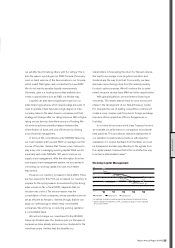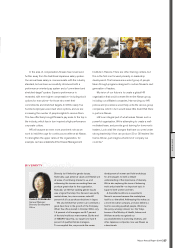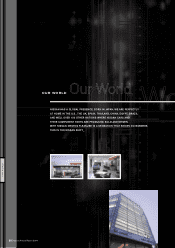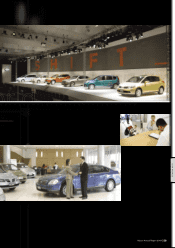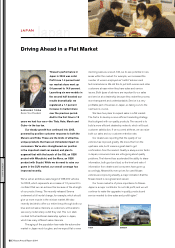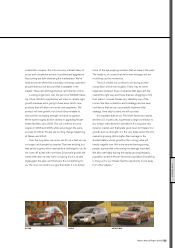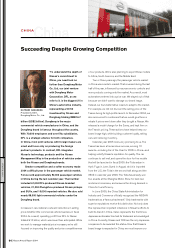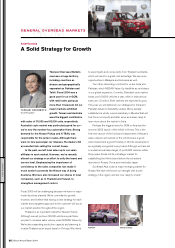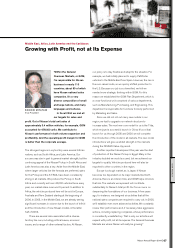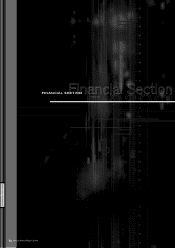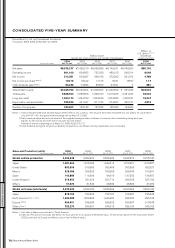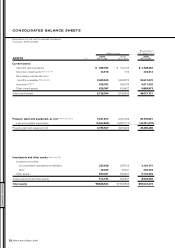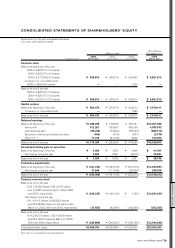Nissan 2005 Annual Report Download - page 67
Download and view the complete annual report
Please find page 67 of the 2005 Nissan annual report below. You can navigate through the pages in the report by either clicking on the pages listed below, or by using the keyword search tool below to find specific information within the annual report.
Nissan Annual Report 2004 65
brand awareness. The Teana represents the first step,
symbolizing the excellence of our product and reputation to
the public.
Despite a tough market in 2004, DFL sold 66,000
DFL-produced Nissan-branded passenger vehicles in the
first half of 2005 alone. This was a result of the new lineup,
our strong brand image, and a creative pricing strategy.
Based on the first-half sales results, DFL has moved to
ninth among automakers in China. Our target for this year
is to sell close to 170,000 Nissan-branded passenger
vehicles. DFL will produce 140,000 of those, which is more
than double last year’s sales, and approximately 30,000
will be Zhenzhou-produced vehicles and imported vehicles.
We also estimate sales of roughly 100,000 DFL-produced
light commercial vehicles. It’s a big challenge, but we’re
very confident of achieving this.
There are risks in China, but that is true of any market.
Today, I see the country as a regular market for Nissan.
The most serious ones are heavy competition, exchange
rate fluctuations and possible increased macroeconomic
control by the government. To minimize these risks and
maximize our opportunities, we rely on two basic strategies:
stay market-driven, and turn out excellent products. DFL
has the product, sales network, factories and R&D
essential to succeeding in this market.
I believe the opportunities in China far outweigh the
risks. Despite heightened political tensions last year, orders
and dealer traffic remained steady. DFL has set a sales
target of 300,000 Nissan-brand passenger vehicles in
fiscal 2007. We also began construction on a new engine
factory in Huadu that will have a capacity of 300,000
engines per year. This provides new opportunities for
cooperation with Renault and increases our localization
level to nearly 80 percent.
One of the reasons for DFL’s success is that we
manage the company based on mid- and long-term plans.
In 2004, we developed and implemented strategies for
DFL, such as brand building with the Teana. Based on that
foundation, we brought more products to market, such as
the Tiida in 2005. These cars are targeted at a segment
that has huge potential. Given China’s own potential, we
foresee significant overall growth in the long term. We have
set high targets for NISSAN Value-Up and I am confident
that we will achieve them.
Nissan has set the standard for establishing operations
in China. Now we’re analyzing the market as we have done
elsewhere. We want to understand the customer and the
market better so that we can deliver excellent products.
With this approach, we will succeed in the emerging market
of China.”
OUR WORLD
TIIDA TEANA FUGA


